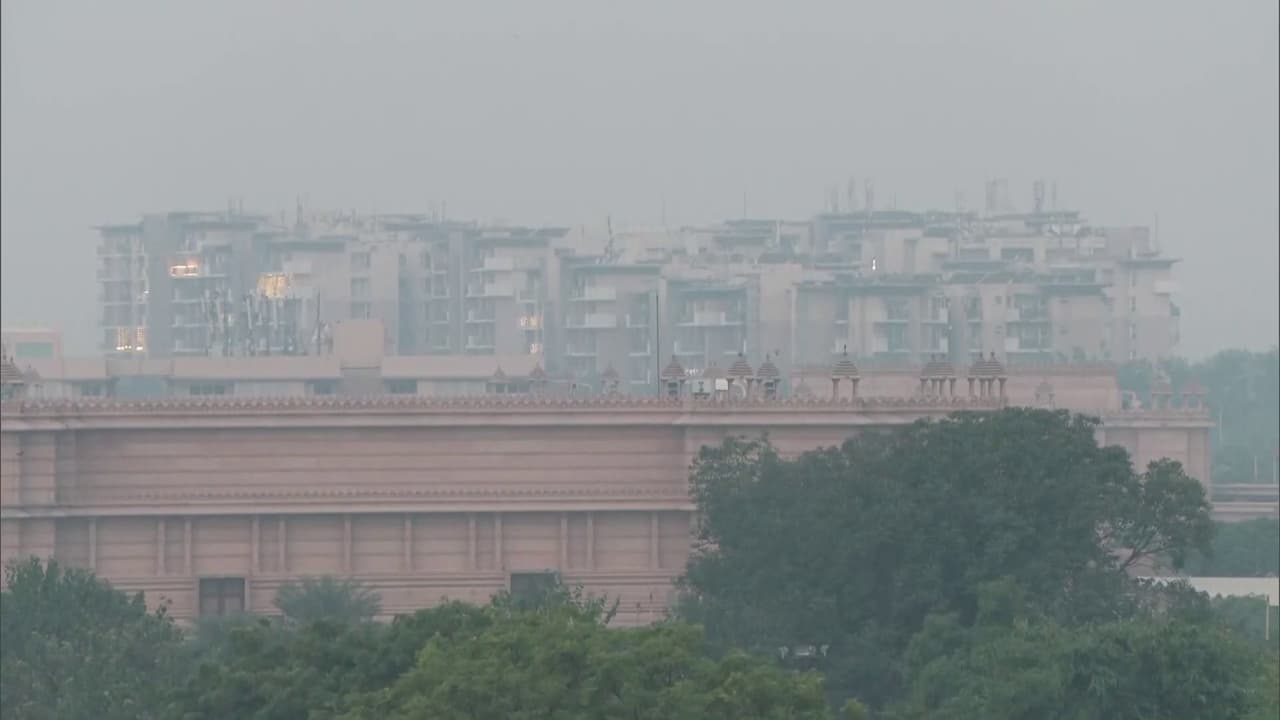Delhi Minister Manjinder Singh Sirsa accused Punjab’s AAP government of encouraging stubble burning to worsen Delhi’s air quality for political gain. He defended allowing green firecrackers, citing a smaller post-Diwali pollution than past years.
New Delhi (India): Environment Minister Manjinder Singh Sirsa has accused the Aam Aadmi Party-led Punjab government of deliberately pressuring farmers to burn crop stubble to worsen the national capital’s air quality and politically target the BJP administration. Speaking to reporters on Tuesday, October 21, Sirsa alleged that the recent surge in stubble-burning incidents was “no coincidence” and claimed farmers were being provoked to ignite fires for political gain. “Over the past four days, stubble-burning incidents in Punjab have surged sharply and this is no coincidence. Farmers are being pressured and provoked to burn stubble so that pollution in Delhi can be used politically to target the Delhi Government,” he added.
Diwali Turns Political
The minister strongly criticized AAP leaders for their recent remarks on Diwali celebrations, accusing them of disrespecting the Hindu festival. “Sanjay Singh and his colleagues have been tweeting since last night, asking to stop celebrating Diwali. Aam Aadmi Party president is cursing the BJP,” Sirsa said. “Diwali isn’t the BJP’s festival. It’s a Sanatan Hindu festival, and why are you cursing the festival?” He added that calling Diwali a “sin” amounts to an insult to faith and culture, stating, “This is the same party that once opposed Lord Shri Ram inside the Assembly.”
Sirsa presented comparative data to defend the government’s decision to allow green firecrackers during Diwali, arguing that post-festival pollution increases were lower this year than in previous years when stricter bans were in place. “Before Diwali, the AQI was 345, and after Diwali, the AQI was 356, according to the CPCB’s Sameer App… Only 11 points increased when the firecrackers were allowed,” the minister said. He contrasted this with 2024, when a complete firecracker ban resulted in a 32-point increase (from 328 to 360), as well as 2020 (21-point increase) and 2021 (80-point increase) when firecrackers were more widely used.
“Will you hold Diwali responsible for this? Will you hold the faith of all the Sanatanas and Hindus in Delhi accountable? What is the fault in this?” Sirsa questioned. The Supreme Court had relaxed its earlier blanket prohibition on fireworks in the national capital, permitting the sale and use of green fireworks with certain conditions.
BJP MP Praveen Khandelwal claimed that current pollution levels represent progress compared to the previous AAP administration. “We have seen that when AAP’s government was in Delhi, the city’s AQI used to cross 600. Today, Delhi’s AQI is around 350,” Khandelwal told ANI. “After 10 years of AAP’s mismanagement, today Delhi’s Chief Minister Rekha Gupta has taken such steps that even after firecrackers were burst in Delhi, the AQI level is lower compared to previous years.” He issued a guarantee that “next year, during these very days, Delhi will have a clean environment.”
Cloud Seeding Plan on Hold Due to Weather
Manjinder Singh Sirsa also addressed growing questions about why the government’s proposed cloud seeding initiative to induce artificial rain has not been implemented despite the pollution emergency. “For those who are asking us, why are we not getting cloud seeding done, I want to tell them that in cloud seeding, the cloud comes first and then comes seeding,” Sirsa explained during a press conference. “Seeding can only be done when there are clouds. The day there will be clouds, we will get seeding done and there will be rain as well.” Cloud seeding, a weather modification technique that disperses substances into existing clouds to induce precipitation, requires sufficient cloud formations with adequate moisture content to be effective.
According to the Central Pollution Control Board (CPCB), Delhi’s overall Air Quality Index stood at 351 as of 4 pm Tuesday. Lodhi Road recorded 343 while Sirifort registered 274. Neighboring cities Greater Noida and Ghaziabad reported AQI levels of 282 and 324 respectively. An AQI between 301 and 400 falls under the ‘very poor’ category, where residents may face breathing difficulties and prolonged exposure can lead to respiratory illness. Health experts have expressed particular concern about vulnerable groups including children, the elderly, and those with respiratory ailments.
The Commission for Air Quality Management (CAQM) had imposed Stage 2 of the Graded Response Action Plan (GRAP) in the National Capital Region with immediate effect on Sunday. Stubble burning in Punjab and Haryana is widely blamed as a major contributor to Delhi’s seasonal air pollution crisis, as smoke from burning agricultural waste travels into the capital. The practice typically peaks during October and November after the rice harvest, coinciding with deteriorating air quality in Delhi.
(With inputs from ANI)
